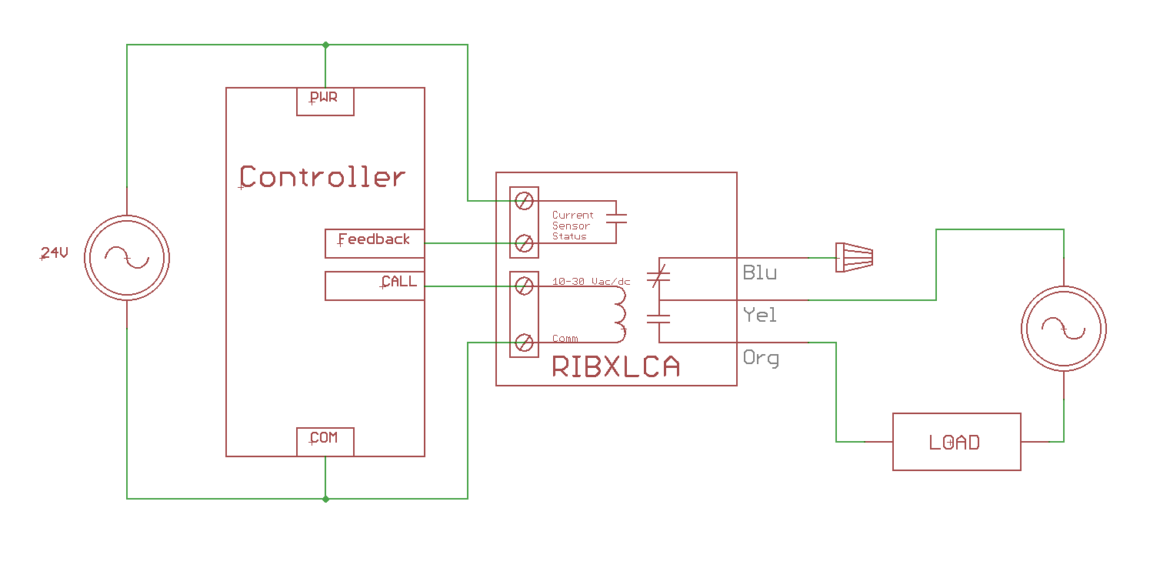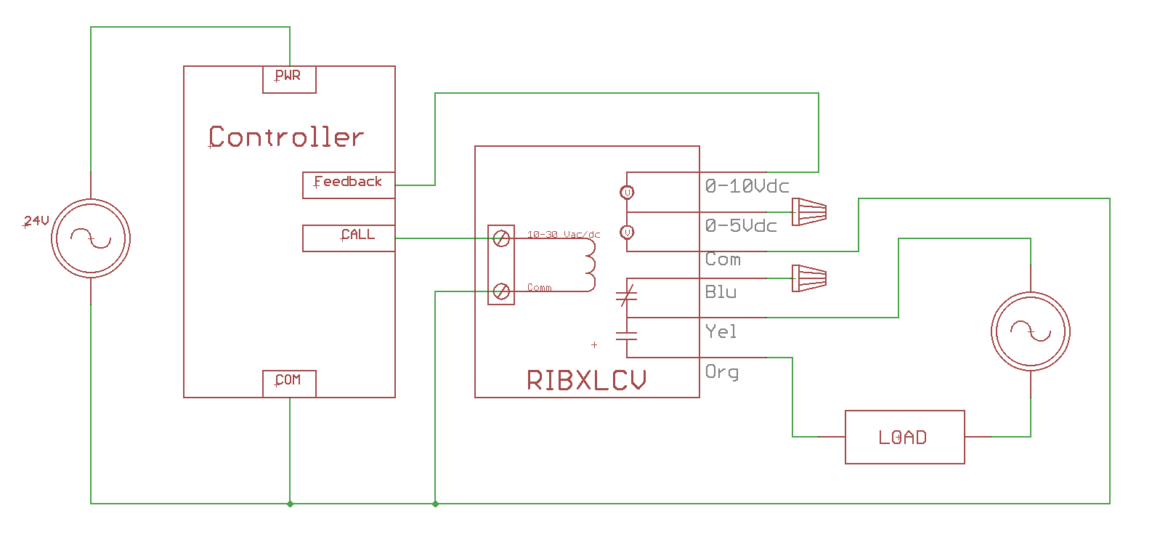Current sensor and relay combinations simplify control, monitoring, and automation by housing two essential components in one compact device. Sometimes, however, facility managers aren’t sure where to use them.
The good news? Applications are almost infinite. Even better? We can boil down use cases into four broad categories. In this blog, we’ll go over each one, providing wiring diagrams and Functional Devices’ “Relay-In-a-Box®” (RIB®) models that could work.
Functional Devices, a trusted U.S. manufacturer of RIB relays, current sensors, transformers, and other building automation components, offers several combo models that make installation easier and more cost-effective. Explore Functional Devices’ full line of current sensor/relay combos or contact the team today to find the right model for your project.
Load Triggered Relay
Want a load to trigger a second? It's easy to do with a current sensor relay combo. Simply put the current sensor on the load wire of the trigger, then run 24V through the current sensor contacts to the relay coil, as seen below. Every time the current sensor is tripped, it will turn on the relay, which will turn on your second load. Good models for this application include the RIBXLSRF, RIBXLCRA, and RIBXLSJA.

Load Trigger with Monitor
It's easy to turn on a load with a relay, but sometimes you also need to make sure it turned on. Current sensor and relay combos are great for this type of application too. Many of our combos, such as the RIBXLSA, RIBXLCA, RIBX24BA, or RIBHX24BA, have the current sensor built into the relay to sense the current going through the relay contacts. Typically, the current sensor status contacts go back to the same controller that turned on the relay. This way, the controller can turn on the load, and then see that yes, it did indeed turn on.

Load Trigger with Supervisor
This application is very similar to the previous one, but with the addition of being able to tell your controller what level of on your load is. This is done with a 0-5V, or 0-10V output on the current transducer instead of a simple on/off status. Models like the RIBX24BV, RIBXLCV, or RIBXLSV are great for this type of application.

Simple Current Sensor and Relay
Sometimes it's just nice to have two different things in the same box. A big assumption with current sensor and relay combos is that you have to use both together in some grand application, which isn't true at all. Sometimes the only reason to get a combo is because you need both a current sensor and a relay for two separate applications, but you're looking to save some space and money. Simple as that!

Advanced Considerations for Current Sensor & Relay Combos
The four setups above cover most applications, but a few technical factors can dramatically improve performance and reliability.
- Inrush Current. Motors, transformers, and capacitive loads often draw a large surge of current when starting. Select a combo with ratings high enough to handle these peaks to prevent nuisance tripping or premature failure.
- Response Time. Fast-changing or pulsed loads require a sensor with a response time that matches the control logic. Confirm the sensor’s specifications to avoid missed or delayed signals.
- Environmental Factors. Temperature swings, vibration, and cramped panel spaces can affect sensor accuracy and relay lifespan. Choose an enclosure and mounting style that suits the installation conditions.
- Wiring Practices. Run low-voltage sensor leads separately from high-voltage power wiring. This reduces the risk of electrical noise, interference, and false triggering.
These considerations can help ensure that your current sensor and relay combo performs as expected over the long term.
Model Selection Tips
Choosing the right RIB model doesn’t have to be complicated. Checking a few key points up front saves time, money, and headaches later.
- Match Current Range. Pick a sensor whose range comfortably covers your load’s normal operating current plus its startup surge.
- Define the Output Type. Decide if you only need on/off status, monitoring feedback, or an analog output signal (0–5 Vdc or 0–10 Vdc).
- Check Voltage Ratings. Confirm that both the relay coil voltage and the load contact voltage are appropriate for your system.
- Review Mounting & Enclosure. Make sure the unit’s size and style fit the space available in your panel or junction box.
By reviewing these factors before ordering, you’ll ensure a smoother installation and more reliable operation.
Rely on RIB Current Sensor/Relay Combos
Nearly every application using a current sensor and relay combo can be simplified into one of these four core setups — with load type and voltage being the key variables. Selecting the right combo ensures proper performance, safety, and long-term reliability.
Functional Devices combines decades of engineering expertise with proven, high-quality products to make that choice easier. Contact our team today to review your specs and discover the ideal solution for your building automation.

